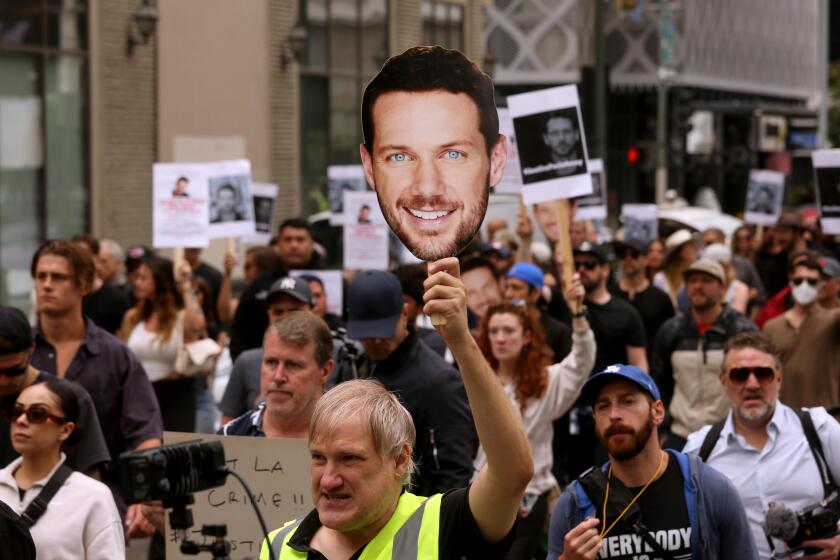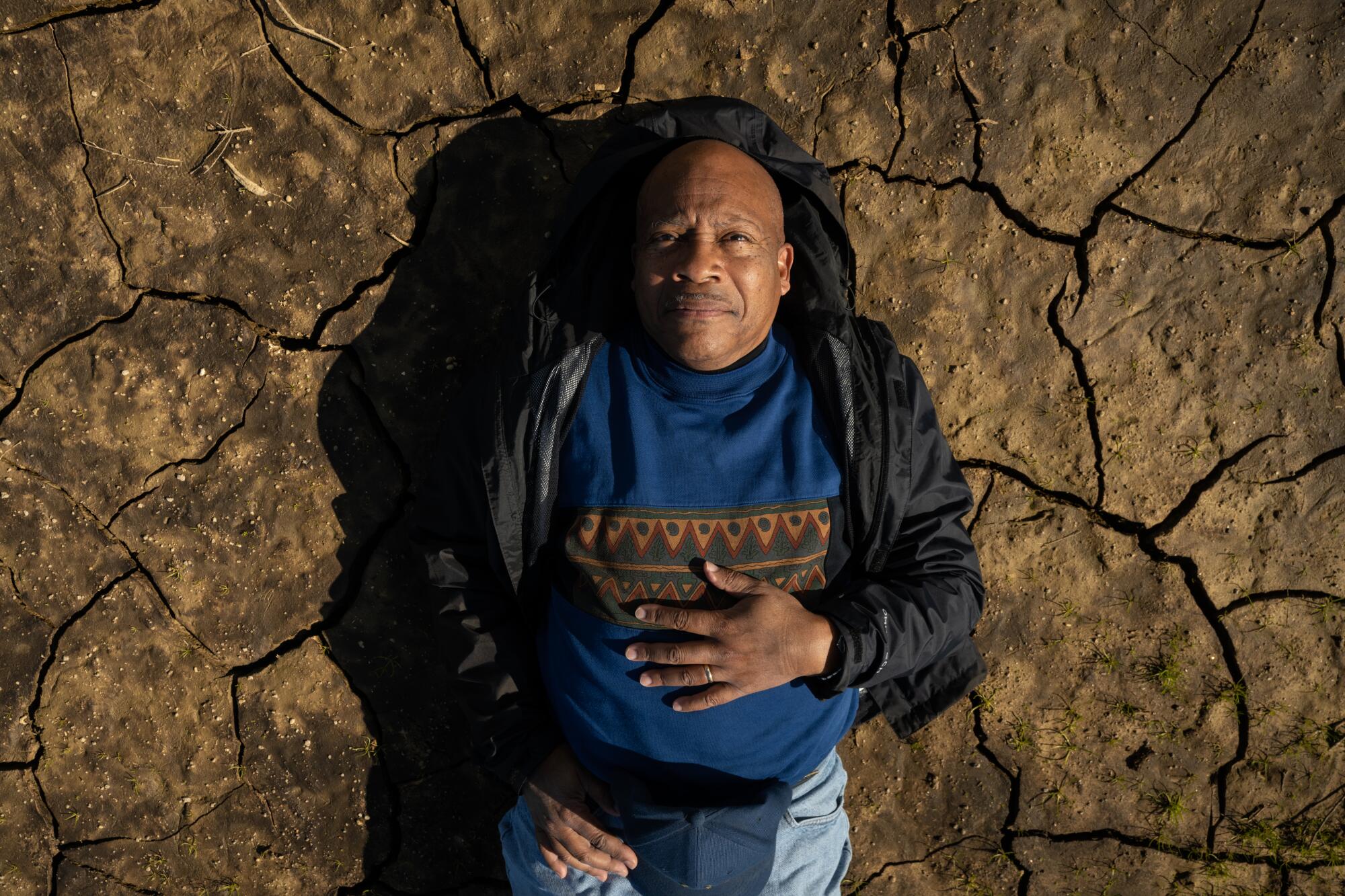
ALLENSWORTH, Calif. — “Food grows where water flows” is a common phrase in California’s Central Valley, but it hits particularly close to home in Allensworth — the state’s first town founded, funded and governed by Black Americans.
Tucked away a half-hour from Bakersfield, unbeknownst to many, a California Historic Park commemorates life in the unique community, which began when Lt. Col. Allen Allensworth and a group of enterprising men sought to create a town where Black residents could prosper free from racist ideologies.
The area was one of many Black townships set up across the nation at the turn of the 20th century. But Allensworth, a former enslaved man who served in the Union Army, and was its highest-ranking Black officer, died before his dream of building a “Tuskegee of the West” could be realized.
Until it was ruined by a series of decisions that historians argue were racially motivated, the town spanned 2,700 acres, complete with the first free-circulation library in Tulare County and a two-room schoolhouse built in 1912.
Historic buildings are scattered today across 240 acres at the site of the former town center. They remain furnished to reflect the time period and Allensworth’s pioneering efforts in Black self-determination.
Off in the distance, beyond the gates of the park, dogs run free in a community without sidewalks, past a collection of trailers and rundown shacks that house the few remaining Black residents and farmhands who still call the area home.
Fortunately for those inhabiting the rural area, a pair of nonprofits — Friends of Allensworth and the Allensworth Progressive Assn. — are now working with residents to continue the colonel’s quest for empowerment by developing agricultural academies and sustaining a farm that could one day serve as an economic engine for the region.
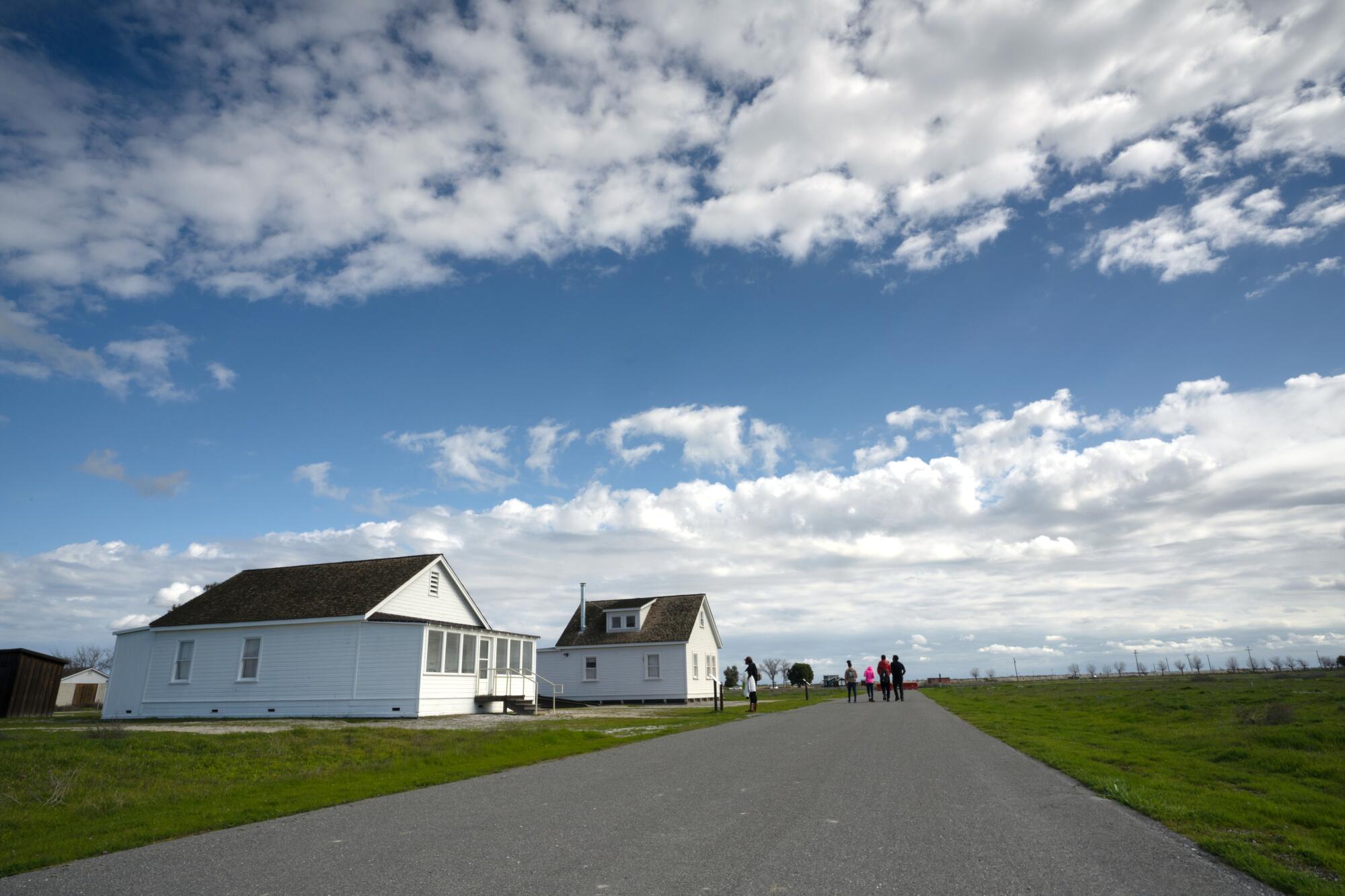
“Martin Luther King wasn’t the only dreamer,” said Sasha Briscoe, a resident of Bakersfield and president of Friends of Allensworth, which organizes events and assists with upkeep at the historic park.
“It’s why we have to preserve this place and the history, so that kids understand the life you see now is not the life it has always been,” Briscoe said, staring out at a field of lush grass packed with buzzing pollinators, intact outhouses and landmark structures.
“It is simply amazing to think that people came from all over to this little place, and they found happiness, economic opportunity; they found peace,” Briscoe added. “There was no racism. Everybody got along.”
A look into the past through the lens of today
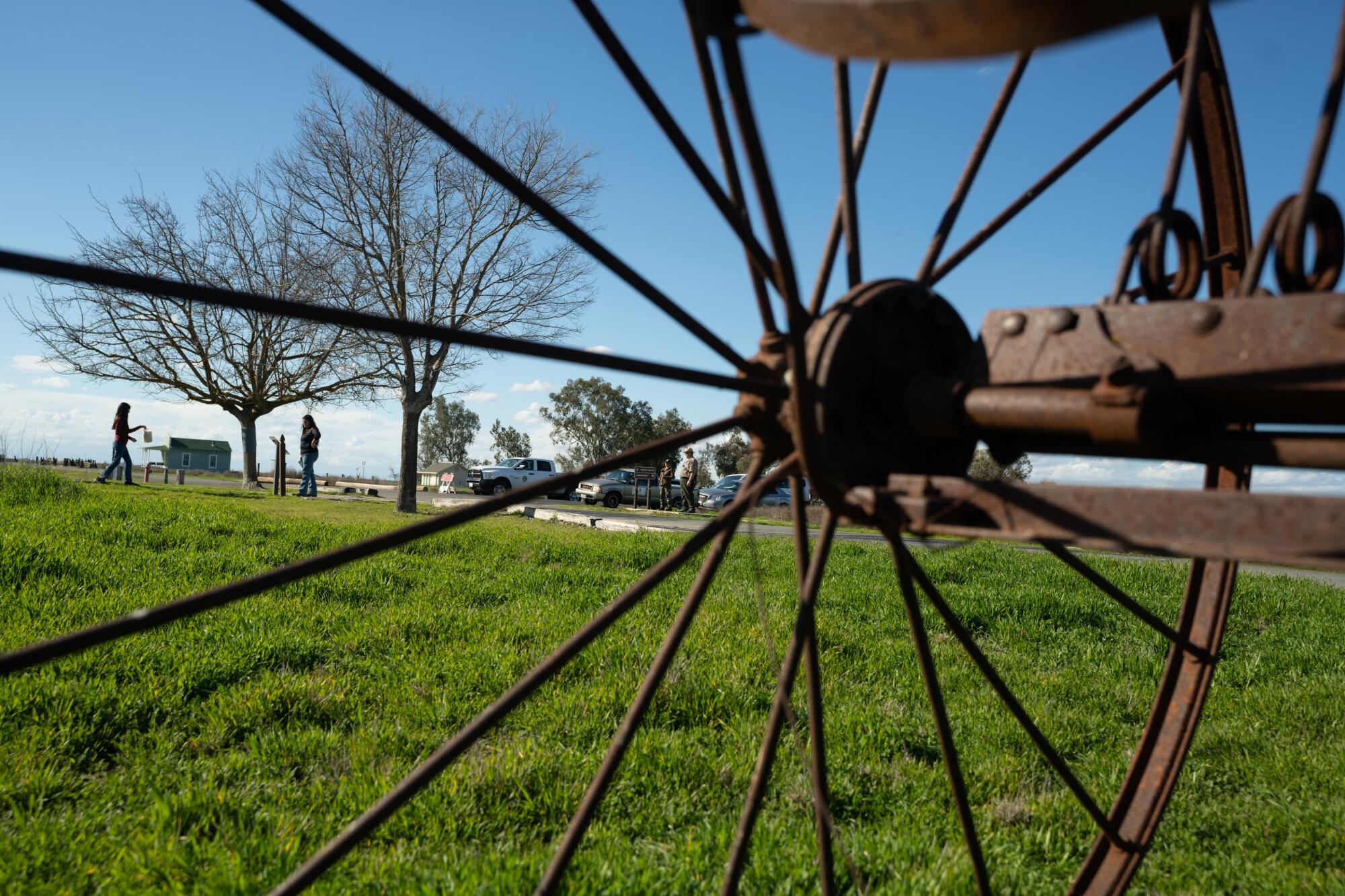
Standing in front of a general store built in 1910, Briscoe joked that she is the park’s most frequent visitor, and she can’t help but ponder what life would be like had Allensworth’s aspirations come to fruition.
She imagines men swapping stories at the barbershop, women shopping for supplies in the drugstore and families enjoying the town’s old-time tradition of chocolates on the weekends.
Such images, though, are inconsistent with the realities that residents face today a few miles up the road, where makeshift fencing surrounds rundown trailers and yards are littered with rusted vehicles and ancient farming equipment.
Train engines frequently rumble in the distance, stopping cars in their tracks — much like the relocation of the old Santa Fe rail line that stopped the town’s growth during the early 1900s.

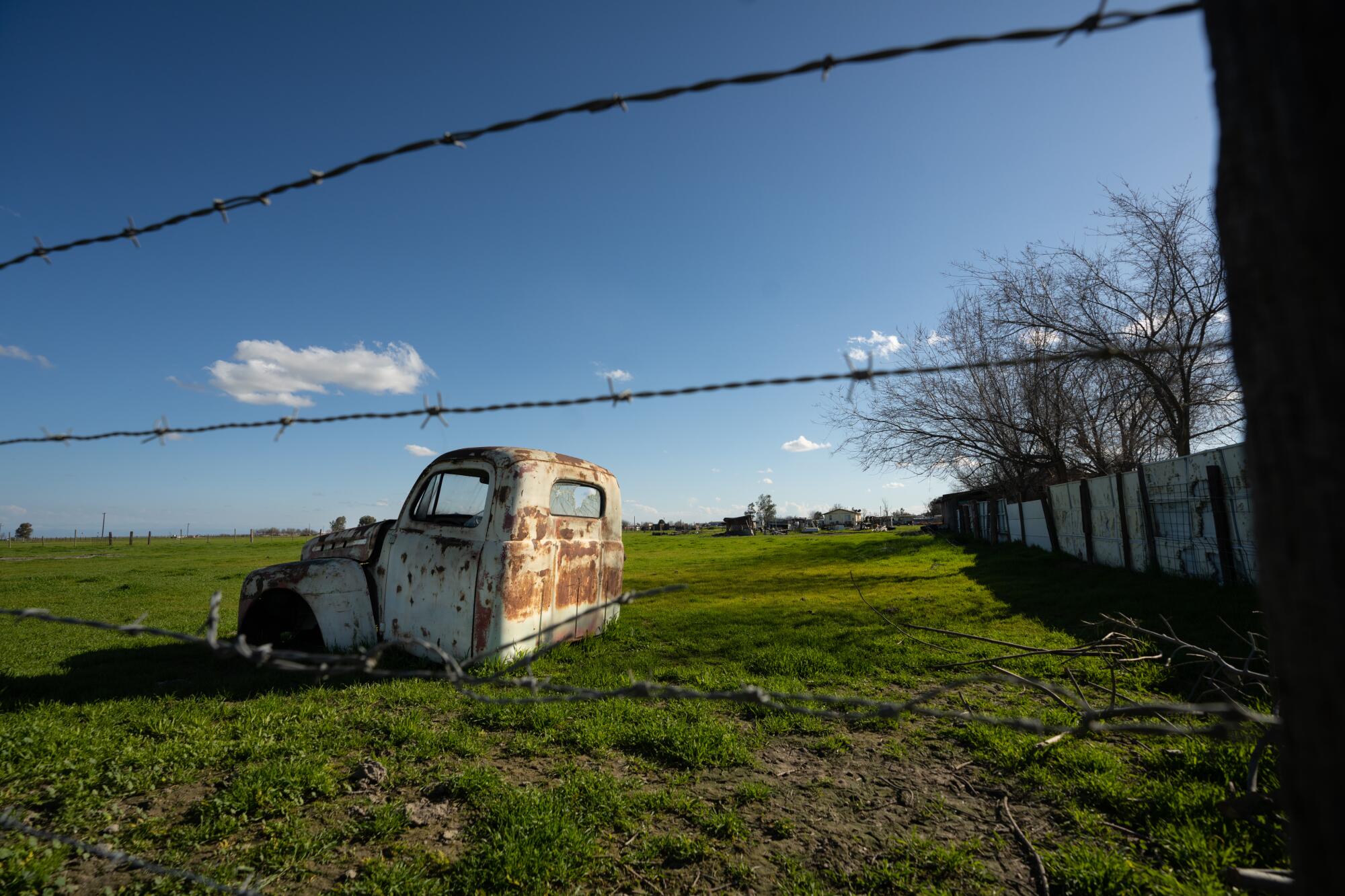
The college its founders envisioned has never existed. Instead, children from the town’s lone elementary school scatter at the sound of the bell to ride bikes and play basketball on patches of dirt.
It’s a far cry from the thriving township that began under the colonel’s leadership. From today’s vantage point it’s hard to imagine that Black families once traversed the country to settle the area — lured by the utopian dream and welcomed with kinfolk-like hospitality.
Some families were provided provisional housing for free, while they ordered new homes from the Sears, Roebuck & Co. catalog. The kits of lumber and supplies would arrive via train.
“Thankfully it was at their front door, so everybody in town would make their way to the station to unload and build the homes together as one,” Briscoe said, noting that the local baker always made sure bread was rising when riders arrived, tempting them to patronize nearby businesses.
In its heyday the town had a few hundred residents. Buffalo Soldiers who’d settled there taught able-bodied men to defend the area, and city leaders, inspired by the colonel’s friend Booker T. Washington, made plans for a university that could turn Allensworth into an economic hub for the Central Valley. As the population grew, a schoolhouse, post office, voting precinct and “ladies’ improvement society” highlighted the status of the burgeoning town.

Today the rail station’s ticket booth sits at the entrance of the historic park, to provide visitors a visual representation of life in the 1900s. But Allensworth history buffs, like Briscoe and Dennis Hutson, a retired Air Force lieutenant colonel, tend to view it instead as a grim reminder of the forces that killed the growing agrarian community.
In 1914, the Santa Fe Railroad moved its rail stop from Allensworth to the white town of Alpaugh, about 10 miles away; a devastating development since trains began to bypass the town.
The town’s agricultural options also took a gut punch when nearby farmers diverted tributaries to irrigate their crops, cutting off the town’s water supply. Then a company stepped in and took control of Allensworth’s water rights, which historians say was a racially motivated effort to stunt the town’s growth.
Residents ultimately regained control, but the water table declined over the years due to drought and diverted waterways, allowing arsenic — a tasteless, odorless and naturally occurring toxic chemical — to become more prevalent underground. The problem persists today.
The final nail in the coffin was Col. Allensworth’s death in 1914 during a trip to Los Angeles to raise state support for his proposed college. He died when a motorcycle struck him as he was stepping off the curb to cross a Monrovia street.
Police believed it to be an accident but some speculate the man was murdered.
Without its inspirational leader, the prospect of a Black utopia began to fade and the town’s residents began to move away.
By 1973, Allensworth could no longer be found on a map.
Keeping the memory alive


Tides began to turn the next year, when the California State Parks restored several buildings and declared Allensworth a historic landmark. Visitors slowly trickled in and recreational vehicles packed the historic park’s campgrounds in 1990s. But the crowds didn’t last.
Families still occasionally stop in to catch a glimpse of the park’s relics on self-guided tours — since limited funding has forced the closure of buildings outside of special events like Founder’s Day, Black History Month and Juneteenth. But with little to do in the town on the other side of the park gates, visitors often head out of the area after a few hours of walking.
Briscoe dreams of a day when volunteers and social-media savvy teens head to the park to serve as docents or raise awareness about the need to fund the renovation of dilapidated structures.
She and park leaders hope the plan to develop a new visitors center and update campground facilities revitalize interest in the area.
Their efforts were boosted by the state’s $40-million allocation to the region in 2022, so the nonprofits, along with Hutson and his band of siblings, now hope to move Col. Allensworth’s vision forward.
This year’s Black History Month celebration provided a preview of what could be if the project comes together.
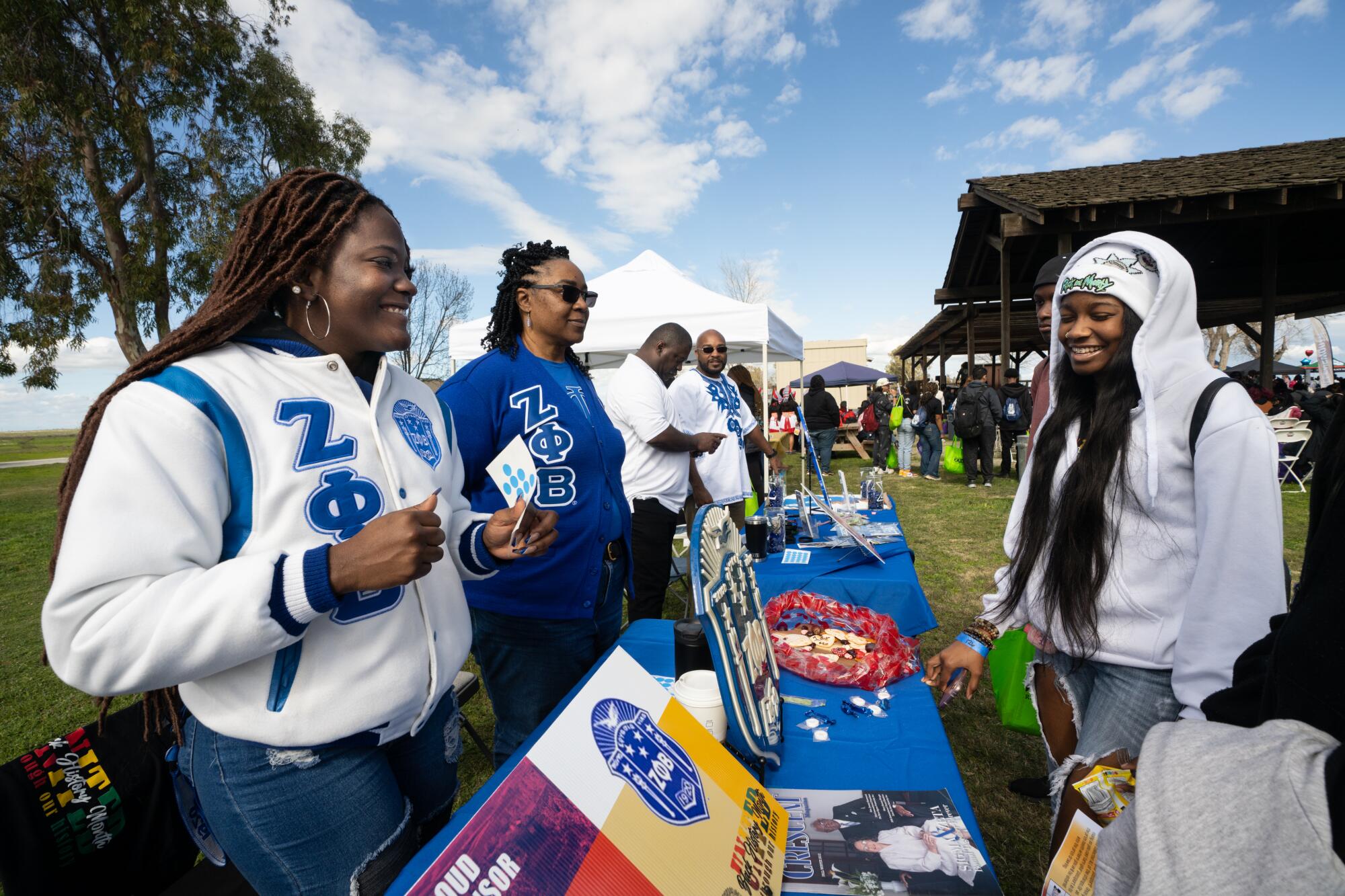
Fresno Unified School District leaders wrangled more than 100 students onto Amtrak for a ride that ended with a special stop at Allensworth, an occasion that typically occurs only on Juneteenth.
The youths, accompanied by seniors and longtime visitors, posted TikTok videos from park benches while attendees paid homage to ancestors. Poetry readings, drumming ceremonies and carriage rides around the park brought joy to the thousands who traveled from Oakland, Fresno and Los Angeles.
“Not a lot of people know about this town, which is a shame because it’s history right here in your backyard. It’s like not knowing who Cesar Chavez is if you’re from the valley, or Dr. King while living in Atlanta,” said Peter Beck, who teaches modern world history and ethnic studies at Fresno Unified.
“You have to know where you came from to know where you’re going,” he added. “Only then can you appreciate the work that people did before you, and then move that work forward generation to generation.”
Hutson agrees with the sentiment.
“It takes time,” he said. “You may not see it in your lifetime, but move with God because your actions may be setting up a future for the next generation.”
A message from above
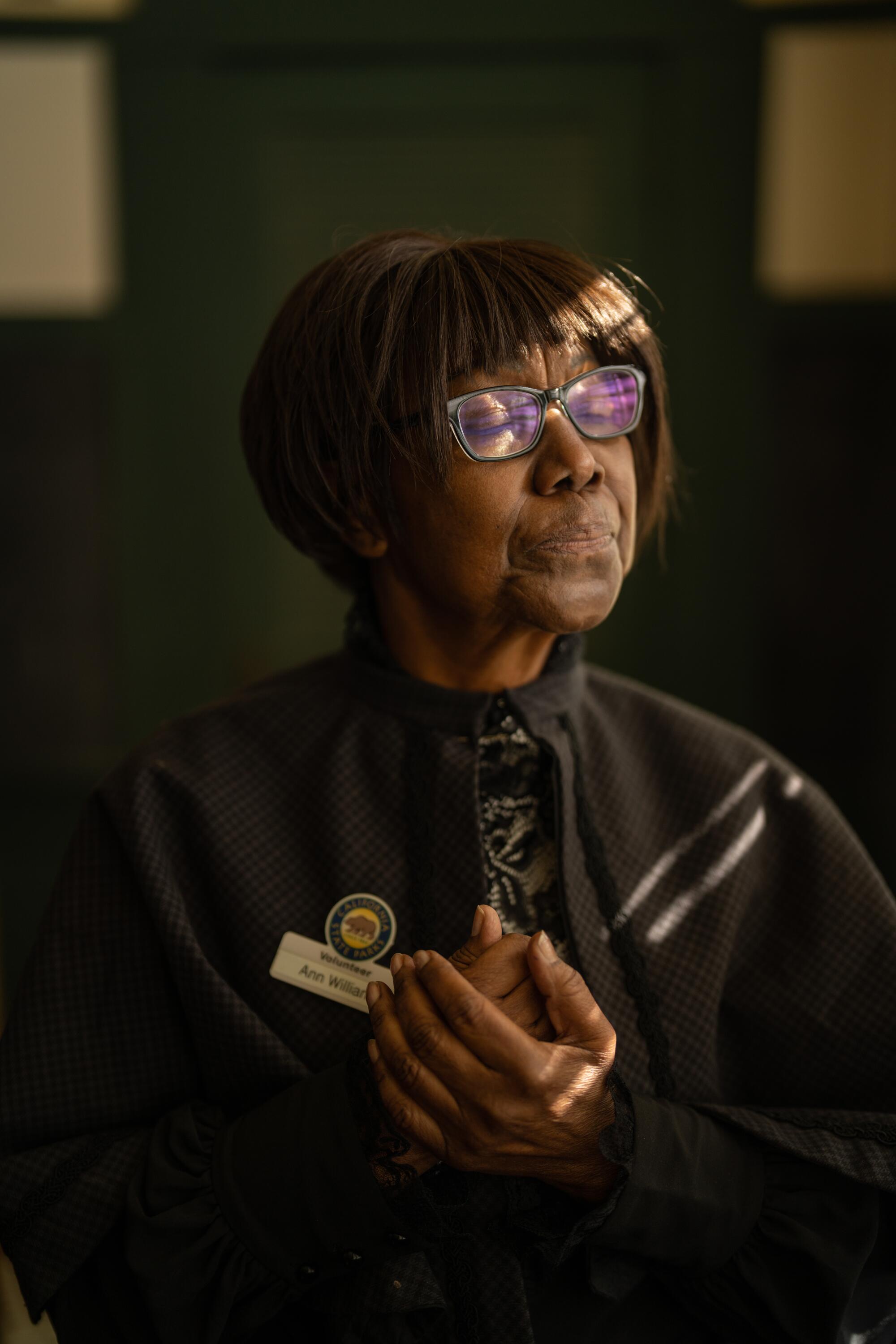
Allensworth laid the foundation for the town’s beginnings, but residents like Hutson’s mother, Nettie Morrison, fought to keep its legacy alive. She moved to the area from Wasco in the late 1970s and sold baked goods out of her living room to raise funds for the construction of a church and community center.
Both buildings still stand about a mile from the historic park. But Hutson, perplexed by the poverty and lack of economic development in town when he’d visit his mother, wondered why the government didn’t do more to assist the community.
And then the Methodist minister heard a voice — “I know it was God,” he said — that challenged him. “Why don’t you do something?” it said.
An email from the U.S. Air Force, encouraging the former chaplain to pursue a master’s degree, led Hutson to an unconventional answer: that something would be rabbit farming.
“Rabbit manure is the most nutritious of all animal manures,” he explains, rattling off facts about earthworms and the sustainable organic processes he uses at a farm he purchased on Dec. 24, 2007 — almost 100 years after Allensworth settled in the area formerly known as Solito.
With a plan and the land, Hutson turned to California Farm Academy Director Sri Sethuratnam and the Center for Land Based Learning, an organization that aims to cultivate future generations of agricultural leaders.
Sethuratnam, like so many others outside of the Central Valley, had never heard of Allensworth until Huston reached out during the pandemic. He felt obligated to head down Interstate 5 to visit before committing to assist.
In his first trip to the area, Sethuratnam vividly remembers inhaling dust as he pondered the town’s proximity to Tulare Lake, once the largest body of freshwater west of the Mississippi River.
In the years since, he and the Center for Land Based Learning have helped Hutson complete the California Department of Food and Agriculture’s Healthy Soils Program, and qualify for the agency’s Beginning Farmer and Farmworker Training Grant.
The state’s $40-million community revival commitment has paved a path for planning and designing the farm’s training program and incubator plots.
“I truly feel this is what I was meant to do,” Sethuratnam said in an interview. “I’ve been in this field for years and everything has led me to this point.”
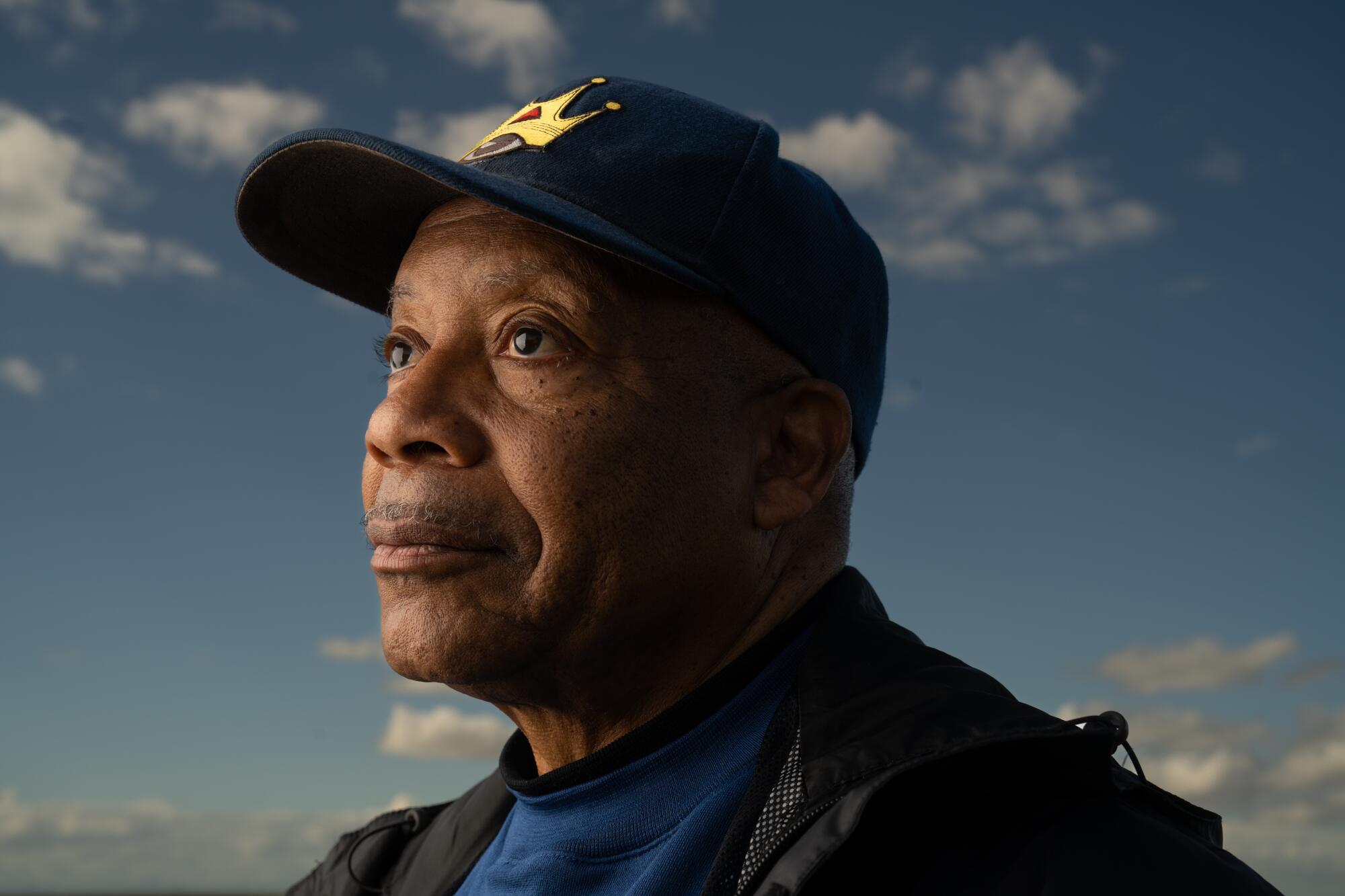
Hutson also considers this his destiny, and thanks God for leading his mother to Allensworth. “Because if she had not come here, then neither I nor my siblings would’ve come,” he said. “And none of this would’ve happened.”
A future begins to sprout
Oats now cover the ground at the farm, but black-eyed peas, kale and other crops grown in the early days of the Allensworth community will sprout one day, Hutson believes.
The water supply remains a challenge, but he and farm leaders are working with universities across the state to rectify the problem. And a deal is in the works to lease Hutson’s land to the Allensworth Progressive Assn.
Once the nonprofit assumes control, the organization will oversee the creation of a farming training program for people of color and socially marginalized groups, with hopes of harnessing the environmental benefits of rabbitry and vermiculture composting.
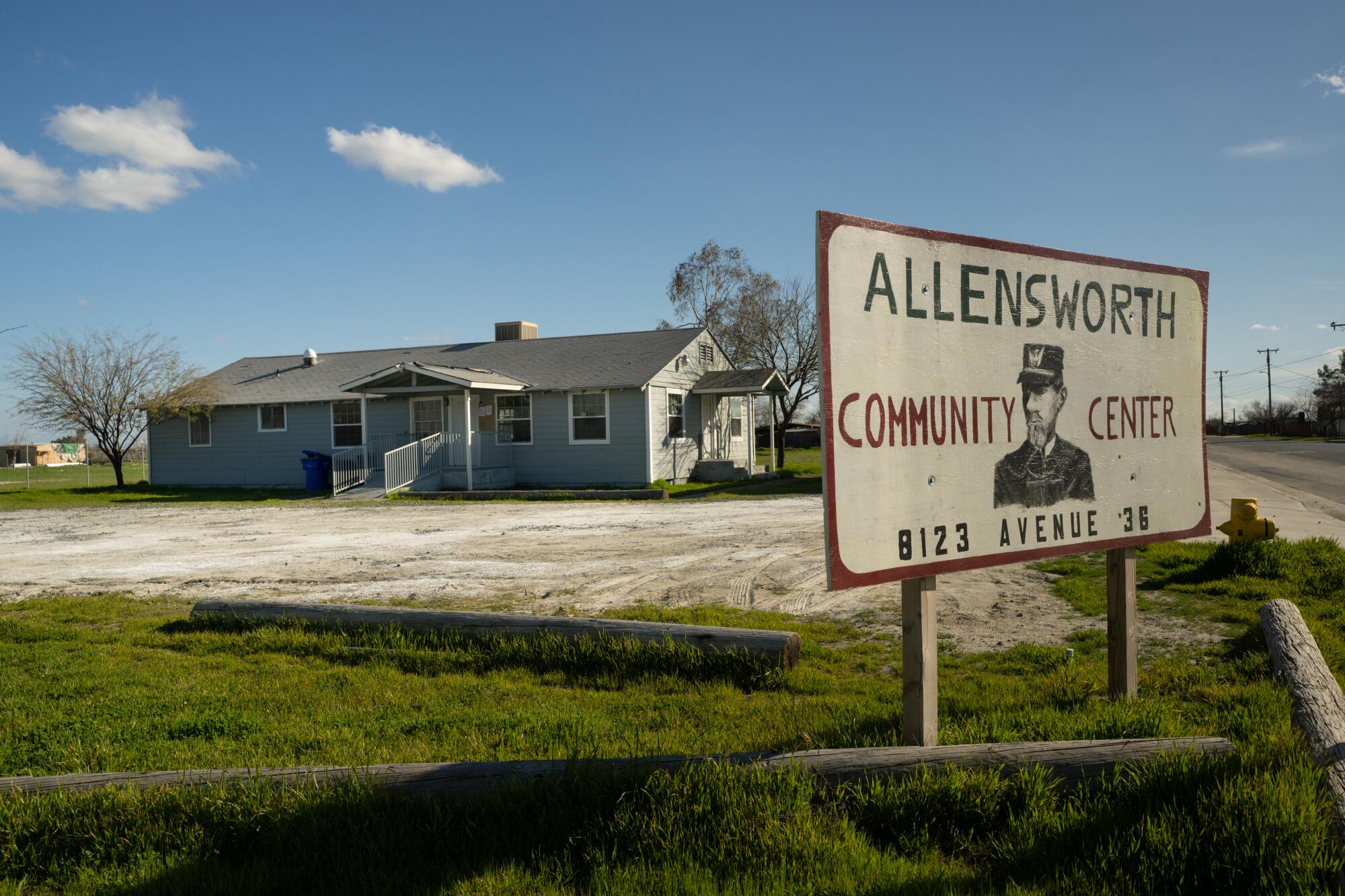
In the meantime, an international design competition known as Architecture at Zero, is underway with applications due in June.
The goal, according to Margie O’Driscoll, a competition advisor for the challenge, is to design a teaching and innovation lab that will help the community become a destination for sustainable agriculture.
The challenge is open to all ages, but graduate students and professionals are required to also design housing on the site, which Sethuratnam and Hutson said is key if they hope to retain talented farmers in the area.
“Success was snatched from Allensworth, but the dream to empower people lives,” Hutson said. “The engine is there. We simply have to combine the various components to construct a vehicle that will drive us all towards a better future.”
More to Read
Sign up for Essential California
The most important California stories and recommendations in your inbox every morning.
You may occasionally receive promotional content from the Los Angeles Times.










